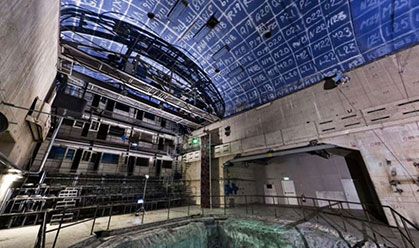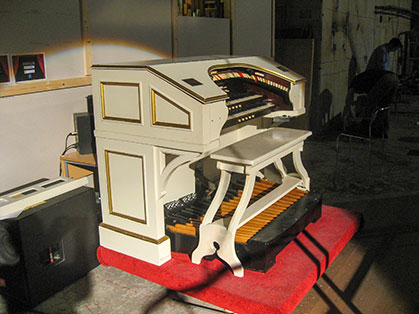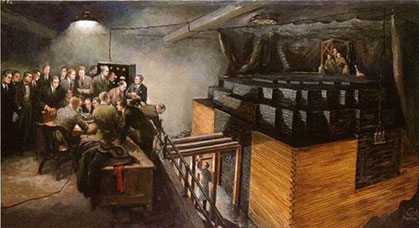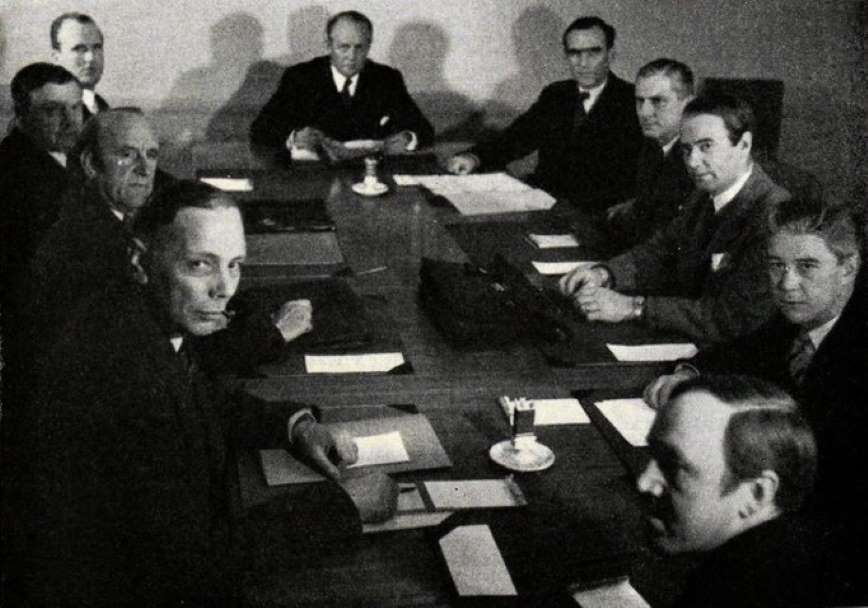History of the KTH Reactor Hall
The Reactor Hall at KTH was originally the site of Sweden's first nuclear reactor, the research reactor R1. The research reactor was in operation between 1954 and 1970. Today, the Reactor Hall at KTH serves as a bookable venue and creative meeting place, and is used not least in activities with the artistic colleges in Stockholm.
1998 - Present
The proposal for a creative meeting place became a reality
In 1998, the Swedish National Agency for Higher Education invited universities and colleges to apply for funding for collaboration with artists. A group of teachers and researchers at the Department of Media Technology at KTH developed several proposals. One of them was that KTH should establish an experimental stage for different kinds of activities - a creative meeting place. One venue was the main option – Reactor Hall! After a few years of initial tests and preparation of the premises, KTH became the formal tenant from 2007. Since then, the Reactor Hall has served as a mixture of museum, cultural center, seminar room, studio, lab and more.
Method of measuring radiation left a mark
The KTH Reactor Hall was in operation until 1970. The main task of the research conducted there was to study the properties of neutrons and other particles and radioactive radiation. In 1970, the KTH Reactor Hall was permanently shut down and demolished in 1982. A few years later, measurements of residual radiation were made.

In order to carry out the measurements in a structured way, a coordinate system was used. The measurements showed that the radiation was below the applicable limit values and the facility was thus cleared by the Swedish Radiation Protection Institute. The clearance means that the former reactor facility could begin to be used for other activities. Today, traces of the Reactor R1 as a research reactor are visible, among other things through the coordinate system in the ceiling, which contributes to the special character of the facility.
1923 - 2015
The story of how the Skandia organ ended up in the “Cathedral of Science”
The Skandia cinema from 1923 had Stockholm's most lavish auditorium, designed by the great architect of the time, Gunnar Asplund. In 1926, Svensk Filmindustri bought an organ for the cinema. The order went to the Rudolph Wurlitzer Company in the USA. The idea was that the organ would be played for silent films, but it was used long after sound films had become popular.
When the Cinemascope widescreen format was introduced in the 1950s, the organ was eventually sold to the City of Stockholm and moved to the Blue Hall in the City Hall. There it was used as a replacement during a renovation of the City Hall organ. When the renovation was completed, the parts of the Skandia organ were placed in the attic of the City Hall, literally on top of the Blue Hall. The parts remained there for over 40 years.

In August 2005, a number of people gathered at KTH to discuss the possibilities of restoring the Skandia organ. Visits were made to the Music Museum's storage room in Tumba, where the Skandia organ's console had ended up, and to the City Hall. Pipes and other parts were inventoried and inspected. Restoration work was deemed feasible! The Skandia Organ Association was formed in April 2006 with the aim of preserving, restoring, making available and using the organ. A collaboration was initiated with KTH. The story says that the researchers at the KTH Reactor Hall used to call it the "Cathedral of Science". And what could be better than an organ in a cathedral?
Extensive work was undertaken to renovate pipes, install bellows and other technology. Construction of the organ house in the side aisle of the Reactor Hall began in April 2011. Thousands of volunteer hours have been put in by members of the association. All the parts of the Skandia organ are in place, with the large bass drum last arriving in August 2015, ten years after the first meeting. The rededication took place in October 2015. The Skandia organ is now used for concerts and other activities, including research into music and technology.
1945 - 1970
The story of Sweden's first nuclear reactor
After the end of the Second World War 1945, the Atomic Committee was formed to clarify "how nuclear research should be organized" and to "find suitable methods for the utilization of nuclear power for peaceful purposes".
In accordance with the Atomic Committee's proposal, AB Atomenergi was established in 1947. The Atomic Committee consisted of 10 delegates, science professors and people with direct or indirect links to the armed forces, including KTH professor Hannes Alfvén. The company's mission was to research and build experimental reactors, but later also to conduct industrial and commercial activities.

At the time, IVA, the Swedish Academy of Engineering Sciences, had an experimental station on Drottning Kristinas väg at KTH Royal Institute of Technology in what was then known as "Vetenskapsstaden", and IVA lent space so that activities related to a research reactor could begin. The reactor facility itself was blasted down just over 25 meters below ground level.
After a couple of years of construction and initial testing, Reactor 1 (R1) was started. At 18:59 on July 13, 1954, the reactor went critical, meaning that nuclear fission became self-sustaining. The main task of the research at Reactor Hall R1 was to study the properties of neutrons and other particles and radioactive radiation.

